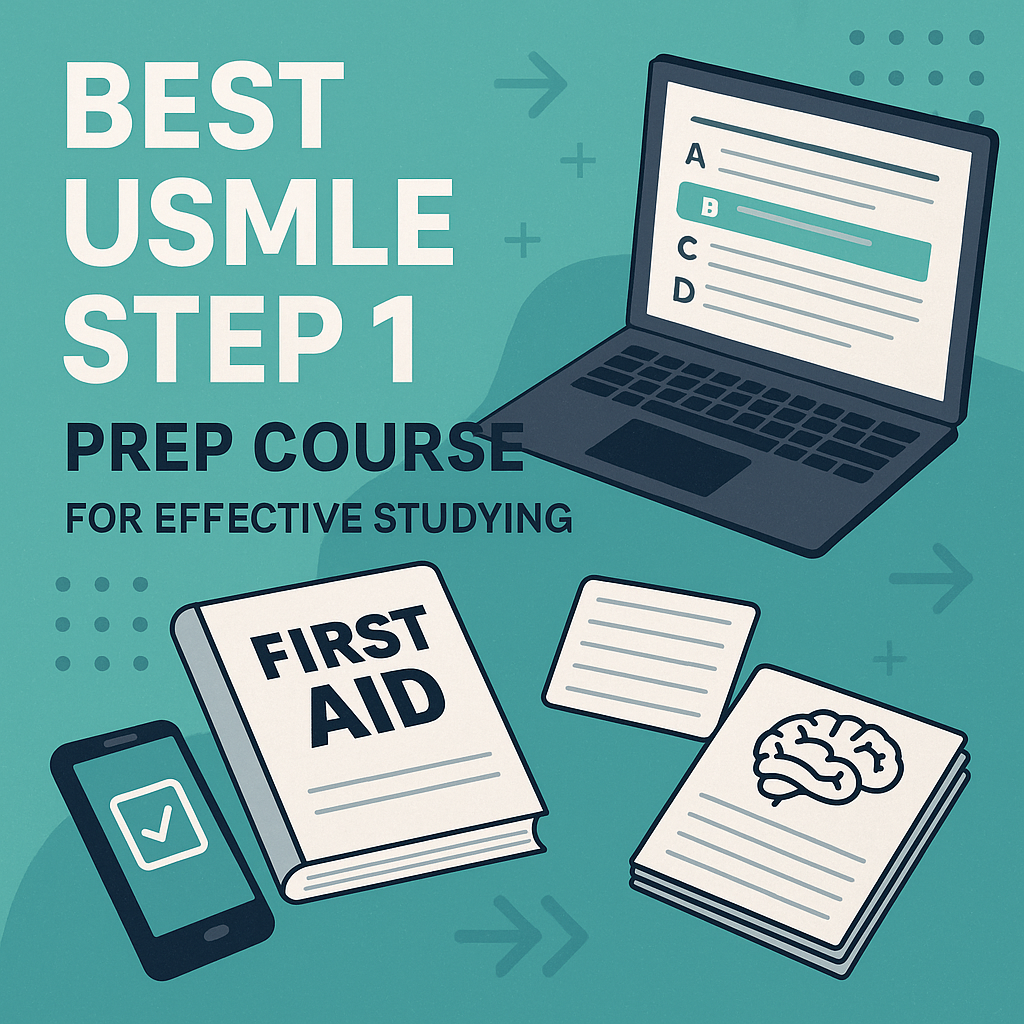
The USMLE Step 1 is a foundational exam for all medical students in the United States and international graduates aiming to practice medicine in the U.S. Although the exam has shifted to a pass/fail format since January 2022, it remains a critical hurdle that demands a deep understanding of basic medical sciences. More importantly, performance on Step 1 continues to influence residency program decisions, particularly in competitive fields.
With an overwhelming number of prep courses available—ranging from interactive platforms to traditional content reviews—it can be difficult to determine which program will offer the best return on your time and effort. This guide is designed to simplify that decision by reviewing and comparing the top USMLE Step 1 prep courses based on their effectiveness, structure, and value.
Key Takeaways:
- The USMLE Step 1 exam is still viewed seriously by program directors despite its pass/fail format.
- A strategic prep course can save significant study time and improve your grasp of high-yield concepts.
- Top courses such as UWorld, Boards & Beyond, and Amboss vary in focus—some emphasize question banks while others provide video lectures and integrated study schedules.
- The best course for you will depend on your learning style, timeline, and whether you prefer structured guidance or independent study.
- This article reviews each course in depth, highlighting key features, pros and cons, ideal use cases, and how they align with NBME expectations.
How to Choose the Right USMLE Step 1 Prep Course
Selecting the most effective USMLE Step 1 prep course is a decision that depends on more than just brand recognition or price. The right course should match your learning style, timeline, academic background, and exam goals. Below are the core factors to consider before investing in any prep resource.
1. Content Coverage and Curriculum Structure
A good Step 1 course should cover all organ systems and disciplines outlined in the USMLE Step 1 Content Outline by the USMLE.org. Look for programs that go beyond rote memorization to emphasize clinical relevance and high-yield integration. Some courses follow a systems-based approach, while others organize content by subject or concept clusters.
What to look for:
- Comprehensive, up-to-date material aligned with NBME expectations
- Integration of pathology, pharmacology, physiology, microbiology, and biochemistry
- Use of clinical case scenarios to reinforce application-based learning
2. Question Bank Quality
The Qbank is the cornerstone of most Step 1 preparation. High-quality question banks help simulate the exam, reinforce content, and build test-taking skills.
Key indicators of a strong Qbank:
- Over 2,000+ clinically relevant questions modeled after the NBME format
- Detailed explanations with illustrations and reference links
- Performance analytics to track strengths and weaknesses
- Option to create custom quizzes or timed blocks for real exam simulation
Example: UWorld and Amboss are widely praised for their NBME-style Qbanks with rich explanations.
3. Video Lectures and Visual Learning Aids
If you’re a visual or auditory learner, video-based content can be essential. Some platforms offer short, high-yield explainer videos, while others provide comprehensive lectures covering every detail of Step 1 topics.
Evaluate:
- Length and depth of video content
- Clarity of visual aids (animations, slides, mnemonics)
- Relevance of material to USMLE exam patterns
Popular choice: Boards & Beyond is known for concise, high-yield videos ideal for independent learners.
4. Study Schedules and Course Flexibility
Every student has a different timeline. Whether you’re preparing in 3 months or over a year, your course should adapt to your pace.
Important considerations:
- Customizable study planners and daily schedules
- Access duration (some offer 1 month to 12 months+)
- Ability to pause or reset your subscription
5. Assessments and NBME Integration
Practice exams are essential for benchmarking your readiness. Look for courses that either offer in-house self-assessments or are compatible with NBME practice exams.
Features to look for:
- At least 2–3 full-length assessments included
- NBME-style interface and question structure
- Performance breakdown by subject and system
6. Support, Tutoring, and Community
Some students benefit from structured mentorship or a supportive peer community. While not necessary for everyone, live tutoring, coaching, or student forums can help maintain consistency and motivation.
Look for:
- Access to USMLE-trained tutors or physicians
- Discussion forums, study groups, or support communities
- Customer support responsiveness
7. Pricing and Value for Money
USMLE Step 1 prep can cost anywhere from $100 to over $1,500, depending on course length and features. Always compare pricing relative to what you’re getting: question bank, videos, assessments, and guidance.
Tips:
- Some platforms offer free trials or money-back guarantees
- Discounts for longer access periods or bundles (e.g., Step 1 + Step 2 CK)
- Watch for seasonal offers or student deals
Overview of the Best USMLE Step 1 Prep Courses
With dozens of Step 1 prep courses on the market, not all are created equal. Some offer powerful question banks and analytics tools designed for high scorers, while others focus on lecture-style instruction that builds a strong foundational understanding of medical concepts. For international medical graduates (IMGs), students from pass/fail schools, or learners needing structure, certain platforms provide added support through coaching or guided study plans.
In the sections below, we review the top-rated USMLE Step 1 prep courses based on criteria such as:
- Content quality and relevance to the exam
- Performance tracking and analytics
- User experience and customization
- Question bank quality and NBME alignment
- Value for money and unique offerings
Each review includes a summary of features, pros and cons, an ideal student profile, and why the course may or may not work depending on your learning style or stage of preparation.
Whether you’re looking for an all-in-one study suite or a supplemental tool to sharpen weak areas, this guide will help you choose a course that fits your academic goals and timeline.
UWorld Step 1 Review: The Gold Standard for USMLE Question-Based Learning
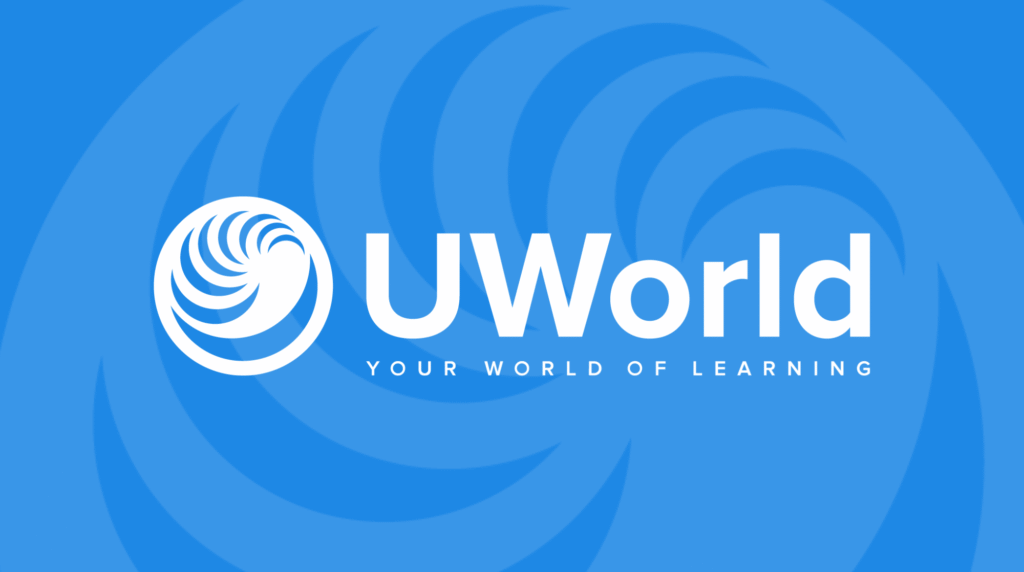
Among all USMLE Step 1 prep tools available, UWorld is widely regarded as the most essential resource for students aiming to master high-yield content and prepare for the real exam interface. UWorld is not a complete content review course—there are no long-form video lectures or foundational teaching modules—but its 2,900+ question bank is engineered to mimic the complexity, style, and clinical thinking required for Step 1 success.
Used by over 90% of U.S. allopathic medical students, UWorld is considered not just a Qbank but a learning platform in itself, offering detailed rationales, performance tracking, and self-assessment tools that help students refine their understanding and testing strategy.
Key Features:
- 2,900+ USMLE-style questions, frequently updated to reflect the most recent NBME exam blueprints
- Extensive answer explanations with key takeaways, clinical correlations, and cross-linked content
- Two self-assessment exams (with select bundles) to gauge performance under simulated conditions
- Customizable practice blocks by subject, organ system, discipline, and question status
- Real-time performance analytics with percentile comparisons against peers
- Interactive tables, medical images, flowcharts, and embedded references for visual reinforcement
- Mobile app support with offline access for Qbank and flashcards
- Integration with UWorld SmartCards (flashcard feature) for spaced repetition and review
Pros of UWorld Step 1
1. Highest-Fidelity USMLE Practice Questions
UWorld’s question bank is considered the closest in difficulty and logic to real NBME exams. The vignettes are complex, application-based, and designed to test understanding across multiple domains—mirroring the clinical reasoning style seen on the actual Step 1.
2. In-Depth Explanations That Teach as You Go
Each question is followed by a comprehensive explanation not only of the correct answer but also of why the other choices are wrong. These rationales include relevant pathophysiology, treatment guidelines, and visual aids like tables and diagrams—essentially turning each question into a mini-lesson.
3. Performance Analytics and Customization Tools
UWorld’s dashboard tracks your strengths and weaknesses across disciplines and systems, allowing you to focus your study time efficiently. The ability to build customized tests by previous performance, difficulty level, or subject matter makes the tool highly adaptable for targeted review.
4. Realistic Exam Interface and Experience
The Qbank mimics the Prometric testing environment—from timer settings and question layout to lab values and tutorial screens—giving students a strong familiarity with the Step 1 experience and reducing anxiety on test day.
5. Widely Recommended by Top Performers and Programs
Most top-scoring and medical schools in the U.S. recommend UWorld as a must-use resource. Many residency program directors are familiar with it and view high performance in UWorld practice exams as a marker of readiness.
Cons of UWorld Step 1
1. No Foundational Video Lectures or Teaching Modules
UWorld is a Qbank, not a comprehensive learning course. It assumes a prior understanding of medical content and focuses primarily on application and reinforcement. Students needing a full content review will have to use supplemental resources like Boards & Beyond or Lecturio.
2. Steep Learning Curve for Early-Stage Students
The complex nature of the questions can be intimidating for beginners. Without prior exposure to USMLE-style thinking, students may initially struggle to extract learning points, especially in the absence of guided instruction.
3. Limited Integration with External Resources
Unlike Amboss, which integrates its Qbank with a built-in reference library, UWorld is a closed platform. It lacks dynamic linking to outside explanations, which could hinder users who prefer quick references or external content for deeper understanding.
4. High Cost Relative to Content Offering
While UWorld excels in quality, it is one of the most expensive Qbanks on the market. The lack of bundled lectures or review material means students must invest in additional platforms, raising total prep costs significantly—especially if using UWorld for Step 2 as well.
5. Rigid Subscription Access and Limited Trial Options
Unlike other programs that offer free trials or flexible pauses, UWorld has strict access periods with limited ability to pause or extend without paying additional fees. For students with unpredictable schedules, this lack of flexibility can be a drawback.
Ideal For:
- Medical students with a solid understanding of Step 1 content looking to refine their test-taking skills
- Those who learn best through active recall, clinical problem-solving, and repeated exposure to NBME-style vignettes
- Students in the final 3–6 months of prep who want realistic practice and accurate feedback on their readiness
- Students pairing UWorld with another content-heavy resource (e.g., Boards & Beyond or Pathoma)
Pricing:
| Plan | Duration | Qbank Only | With 2 Self-Assessments |
|---|---|---|---|
| Basic | 30 days | $249 | N/A |
| Standard | 90 days | $349 | $439 |
| Extended | 180 days | $439 | $529 |
| Premium | 360 days | $549 | $649 |
Note: UWorld frequently offers bundle deals for Step 1 + Step 2 CK prep. Self-assessments can also be purchased separately at $40–$50 per exam.
View official pricing on UWorld
Bottom Line:
UWorld remains the most essential question bank for USMLE Step 1 prep. It is not a substitute for learning content from scratch, but it is an unmatched tool for application, reinforcement, and high-level clinical reasoning. For students aiming to pass Step 1 with confidence—or push into top percentile ranks—UWorld is a non-negotiable part of the prep journey.
Boards & Beyond Step 1 Review: Master the Foundations with High-Yield Video Lectures
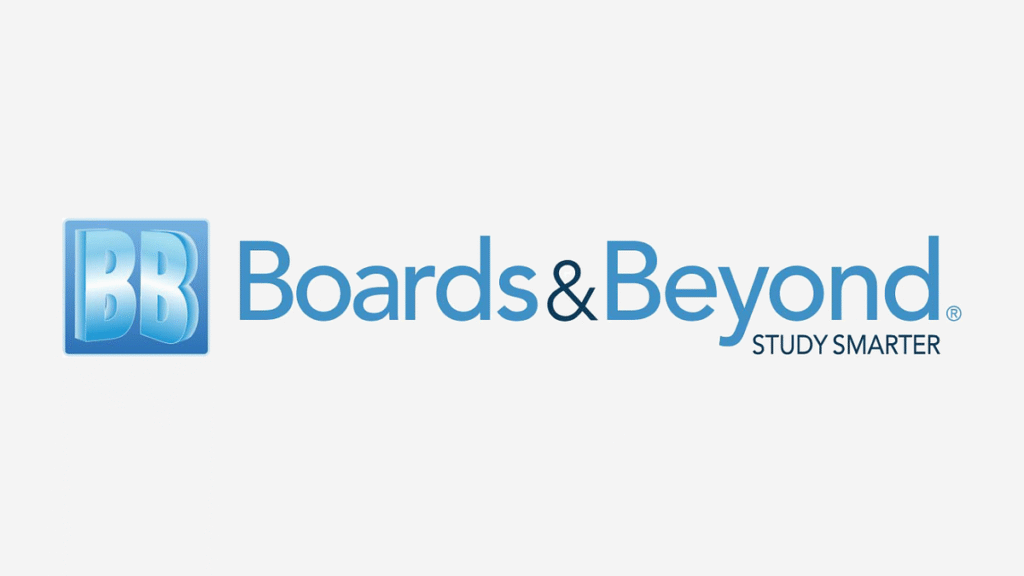
Boards & Beyond (B&B) is one of the most trusted and widely used USMLE Step 1 prep resources, especially for content review. Created by Dr. Jason Ryan, a cardiologist and medical educator, the platform is known for its clear explanations, organized structure, and clinical integration—helping students understand not just what they need to know for Step 1, but also why it matters in a clinical context.
Unlike UWorld, which is question-focused, Boards & Beyond is a lecture-based platform designed to teach the fundamental concepts tested on Step 1. It is particularly effective during the preclinical years or at the beginning of a Step 1 study plan.
Key Features:
- 600+ concise video lectures covering physiology, pathology, pharmacology, microbiology, biochemistry, and behavioral science
- Structured into organ systems and foundational science disciplines
- Integrated with chapter-based PDF outlines and reference materials
- Custom Study Paths for different timelines (1-month, 3-month, 6-month options)
- Robust Qbank with over 2,300 NBME-style questions (included in newer subscriptions)
- Ability to track video progress and quiz performance
- Mobile-friendly with adjustable playback speed
Pros of Boards & Beyond
1. Comprehensive and Organized Lecture System
Boards & Beyond’s content is structured in alignment with the Step 1 content outline. Each video builds on the previous one, offering a logical progression through systems and subjects. This makes it ideal for building a strong foundational understanding of complex topics.
2. Clear, High-Yield Teaching Style
Dr. Jason Ryan’s presentation is known for being clear, calm, and clinically oriented, with a focus on understanding over memorization. Explanations are consistently tied back to clinical relevance and real Step 1 exam patterns, making it easier to retain material.
3. Ideal for Early and Independent Learners
For students who want to begin prep early, Boards & Beyond offers a scalable study tool. It allows first- and second-year medical students to pace themselves and revisit concepts before progressing to question-based review platforms like UWorld.
4. Now Includes a Full-Length Qbank
The addition of the B&B Qbank in recent years makes the platform a more complete solution. The questions are NBME-style, paired with video references, and often serve as reinforcement after each topic.
5. Cost-Effective Compared to Full Packages
While it doesn’t include live tutoring or analytics like more expensive platforms, B&B offers excellent value for money—especially when used as a primary content review tool before switching to intensive question practice.
Cons of Boards & Beyond
1. Not a Substitute for Active Practice
Boards & Beyond teaches the why, but without combining it with consistent Qbank use, students may fall short on how to apply knowledge in test conditions. It’s best when used in combination with UWorld or NBME practice tests.
2. Lectures Can Be Time-Consuming
With over 100+ hours of video content, students with limited time (e.g., 4–6 weeks before Step 1) may find it hard to get through the full curriculum. Efficient scheduling is crucial to avoid falling behind.
3. Minimal Interactivity
There are no animations or highly interactive visuals—just static slides with voiceover. For visual learners who prefer tools like Sketchy or interactive diagrams, the format may feel too passive or dry.
4. Qbank Still Lags Behind UWorld in Depth
Although the newly added Qbank is helpful, it is still relatively new and less refined compared to UWorld or Amboss. Explanations are good but less detailed and analytic, and the question variety is more limited.
5. Limited Exam Simulation Tools
Unlike Kaplan or UWorld, B&B doesn’t provide full-length self-assessments or NBME-style simulations. This makes it weaker as a stand-alone course in the final weeks before the exam.
Ideal For:
- Students in early preclinical years looking to gradually build a strong Step 1 foundation
- Independent learners who prefer structured video lectures over classroom learning
- Test-takers who plan to use multiple resources, with B&B as the primary content review and another Qbank for application
- International medical graduates (IMGs) who need to relearn basic sciences systematically
Pricing:
| Plan | Access Duration | Price |
|---|---|---|
| 1 Month | $49 | Video access only |
| 3 Months | $119 | Video access only |
| 6 Months | $169 | Video + limited Qbank access |
| 12 Months | $249 | Video + full Qbank + study paths |
| Institutional Access | Varies | Available for med schools and universities |
View pricing on the official Boards & Beyond site
Bottom Line:
Boards & Beyond is one of the most comprehensive and affordable options for video-based USMLE Step 1 preparation. While it lacks robust testing and performance analytics, its systematic and clinically focused lectures make it an excellent starting point for first-time learners and those building long-term knowledge. For maximum effectiveness, it should be paired with a high-quality Qbank like UWorld during the later stages of prep.
Amboss Step 1 Review: The Smartest Integrated Platform for Medical Learning
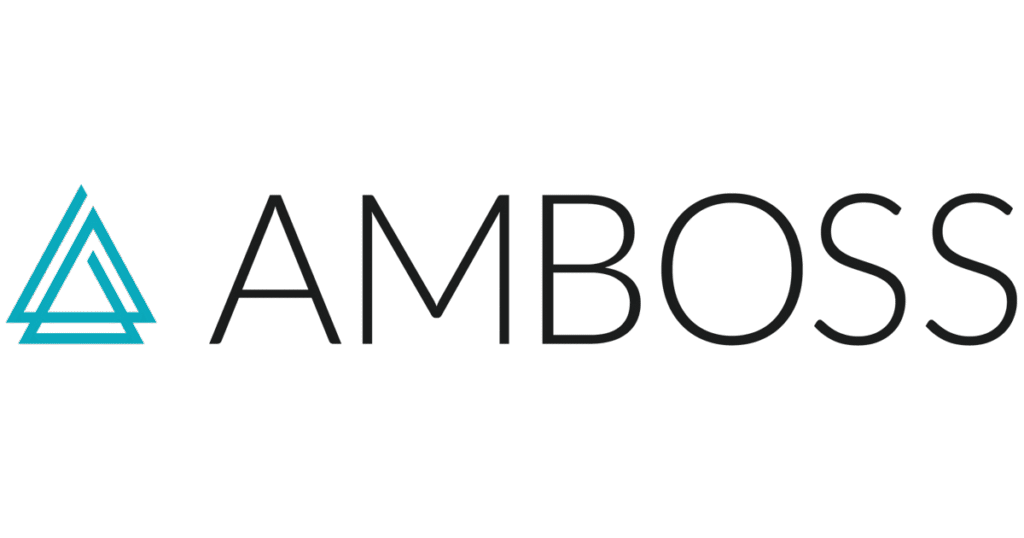
Amboss has gained rapid popularity among medical students for its hybrid approach to USMLE prep—seamlessly combining a high-quality Qbank, a comprehensive reference library, and smart learning tools that adapt to the student’s performance. Developed by physicians in Europe and used in over 180 countries, Amboss serves both as a clinical knowledge platform and a Step 1 study tool, offering flexibility and efficiency in a single interface.
Where UWorld excels in raw exam simulation, Amboss excels in real-time learning support, giving students the ability to look up explanations mid-question, link back to reference articles, and use built-in learning aids like high-yield highlights and image overlays.
Key Features:
- 4,200+ USMLE-style Step 1 questions with customizable filters
- Full access to the Amboss Medical Library with 20,000+ evidence-based reference articles
- Smart features like answer pop-ups, anatomical overlays, and embedded explanations
- Study recommendations based on weak areas and user performance
- Day-by-day study planner with pre-made study schedules
- Cross-platform support for web, iOS, and Android
- Offline access and integration with Anki through the Amboss add-on
Pros of Amboss Step 1
1. Integrated Learning System
Amboss merges question practice with a detailed medical reference—meaning students can instantly review related concepts or diseases while solving questions. This eliminates the need to switch between resources, streamlining the learning process.
2. Large, High-Quality Qbank
With over 4,200 questions, Amboss offers one of the largest Qbanks on the market. The content spans all Step 1 topics and mimics NBME question styles, with particular strength in basic sciences and pathophysiology.
3. Smart Learning Features
Unique to Amboss are features like the “Attending Tip,” “Highlighting Tool,” “Learning Radar,” and diagnostic overlays on medical images—which guide learners toward high-yield concepts while reinforcing recall.
4. Highly Customizable and Adaptive
Amboss lets users filter questions by discipline, difficulty, prior mistakes, or confidence level. It also generates personalized study recommendations based on your past performance, creating a dynamic learning experience.
5. Excellent for Active Recall with Anki Integration
Amboss offers a powerful Anki add-on that allows students to click Amboss pop-ups within their flashcards. This bridges passive review with active recall, ideal for long-term retention of Step 1 concepts.
Cons of Amboss Step 1
1. Less Realistic Exam Simulation
While the question quality is high, Amboss’s interface does not perfectly mimic the NBME testing platform. For students preparing for the exam-day experience, this makes UWorld a better simulation tool.
2. Explanations Less Detailed than UWorld
Although efficient, Amboss explanations tend to be more concise and reference-based, rather than walking the student through complex clinical logic. Learners who prefer deep rationales may find them too brief.
3. No Long-Form Video Lectures
Amboss focuses on short-form content and question-based learning. It lacks a full video lecture series like Boards & Beyond or Lecturio, which can be a disadvantage for those building foundational knowledge.
4. Overwhelming for New Learners
The sheer volume of features, filters, and reference links can be overwhelming for beginners, especially those unfamiliar with the USMLE format. It takes time to learn how to use Amboss effectively.
5. Expensive Without Student Discounts
Amboss can be pricey, especially for longer subscriptions. Though institutions often offer free access, individual pricing is less competitive when compared to bundled services like Kaplan or Lecturio.
Ideal For:
- Students who want a more integrated, reference-style prep experience
- Independent learners who use Anki or prefer self-guided reinforcement
- Students already familiar with basic content, looking to enhance understanding and retention
- Those preparing for Step 1 over a longer timeline, needing both content review and applied practice
Pricing:
| Plan | Duration | Price (Qbank + Library) |
|---|---|---|
| 1 Month | $35 | Qbank only |
| 3 Months | $89 | Full access |
| 6 Months | $149 | Full access |
| 12 Months | $219 | Full access |
| Institutional Access | Varies | Often free via med school |
See pricing on the official Amboss website
Tip: Amboss often provides free trials and institutional access. Many U.S. and international med schools offer Amboss through their libraries—students should check before purchasing.
Bottom Line:
Amboss is a versatile and intelligent platform that combines in-depth question practice with immediate concept reinforcement. It’s not a full substitute for lecture-based content, but it shines for intermediate to advanced learners looking to fine-tune knowledge and study efficiently using adaptive tools. For those who want a resource that supports learning both during preclinical years and while preparing for exams, Amboss is a top-tier option.
Lecturio Step 1 Review: A Structured, All-in-One Platform for Video-Based Learners
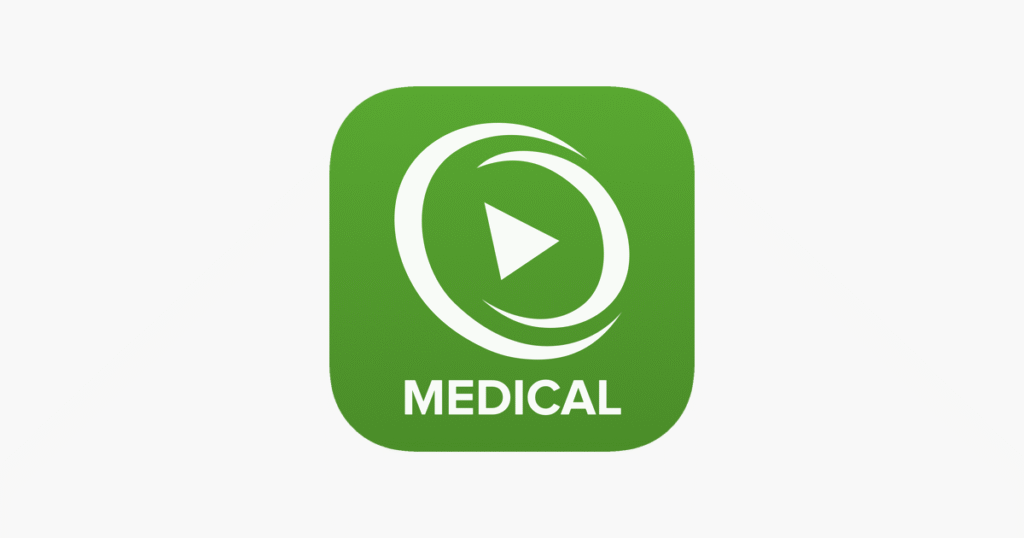
Lecturio is a full-featured USMLE prep platform that combines extensive video lectures, a growing Qbank, and AI-powered learning tools designed to enhance retention and long-term mastery. Known for its clean interface and faculty-style teaching format, Lecturio is ideal for students who need a structured path from foundational learning to exam application.
Unlike UWorld or Amboss, Lecturio offers over 6,500 video lectures spanning all USMLE Step 1 subjects, making it particularly effective for those who prefer to learn through guided explanations rather than self-navigation. It also includes spaced repetition flashcards, adaptive learning paths, and real-time progress tracking.
Key Features:
- 6,500+ high-definition video lectures across all Step 1 subjects
- Qbank with 2,000+ USMLE-style questions and integrated answer explanations
- Concept pages and notes tied to each video for quick reference
- Smart recall quizzes and spaced repetition flashcards based on your weak areas
- Personalized study calendar with adaptive recommendations
- Daily study reminders, progress analytics, and performance tracking
- Available across web and mobile apps with offline access
Pros of Lecturio Step 1
1. Comprehensive and Structured Video Library
Lecturio offers one of the largest and most organized collections of medical lectures available. Topics are divided by system and subject, with clear objectives and explanations, making it ideal for learners who want a textbook-style, lecture-driven prep strategy.
2. Built-in Smart Learning System
The platform uses AI-driven spaced repetition algorithms to identify weak areas and recommend flashcards and quizzes accordingly. This allows for efficient retention and personalization of the learning experience.
3. Integrated Qbank and Notes System
Lecturio links each video to pre-made notes, concept summaries, and relevant Qbank questions, giving users an efficient way to transition from watching to applying what they’ve learned—perfect for self-directed study sessions.
4. Highly Supportive for IMGs and Early Learners
International students or those new to U.S.-style medical testing will benefit from the step-by-step teaching, long-form explanations, and the ability to build foundational knowledge before attempting more difficult question banks like UWorld.
5. Affordable Long-Term Access
Compared to other platforms, Lecturio is cost-effective, especially when purchased with 6- or 12-month access. It offers more for students looking for both video content and practice tools in one subscription.
Cons of Lecturio Step 1
1. Qbank Is Less Challenging Than UWorld or Amboss
While Lecturio’s Qbank is useful for practice and concept reinforcement, it lacks the exam-level difficulty and clinical nuance found in UWorld or Amboss. It’s best used for early-phase practice, not last-mile preparation.
2. Lecture Format May Feel Too Passive
The videos are often traditional in style—slide-based with narration. For students who learn better through active problem-solving or case-based reasoning, the passive nature of long lectures may not be engaging enough.
3. Fewer NBME-Style Full-Length Assessments
Lecturio does not provide NBME-format full-length self-assessments, which limits its value as a standalone course in the final weeks of prep when exam simulation becomes critical.
4. Overwhelming Volume of Content
With over 6,500 videos, students can get lost in the content if they don’t follow a strict schedule. For short-term prep (less than 2 months), Lecturio may feel too content-heavy and slow-paced.
5. User Interface Less Dynamic Than Amboss
Although organized, Lecturio’s platform lacks some real-time interactivity—like pop-up references, overlays, or advanced filtering. Students looking for smarter, contextual tools may find Amboss more intuitive.
Ideal For:
- International medical graduates (IMGs) needing a full, structured review of U.S. Step 1 content
- Students in the early stages of prep looking for lecture-based learning rather than a question-first strategy
- Visual learners who benefit from step-by-step faculty instruction and integrated notes
- Budget-conscious students who want video + Qbank + flashcards in one bundle
Pricing:
| Plan | Access Duration | Price |
|---|---|---|
| 1 Month | $59 | Full access (videos + Qbank + flashcards) |
| 3 Months | $119 | Full access |
| 6 Months | $199 | Full access |
| 12 Months | $299 | Full access |
| 24 Months | $399 | Full access (best value for long-term prep) |
See official pricing on Lecturio’s website
Note: Lecturio often provides student discounts and free trial periods.
Bottom Line:
Lecturio is a strong choice for students who prefer structured video learning, especially early in their Step 1 journey. Its smart learning tools and built-in quizzes offer a complete review experience, though it may not be sufficient on its own for late-stage prep or high scorers aiming to master advanced clinical application. Used alongside UWorld or NBME assessments, it can be a highly effective core study tool—particularly for IMGs, visual learners, and content-heavy learners.
USMLE-Rx Step 1 Review: Best Companion Course for First Aid Users
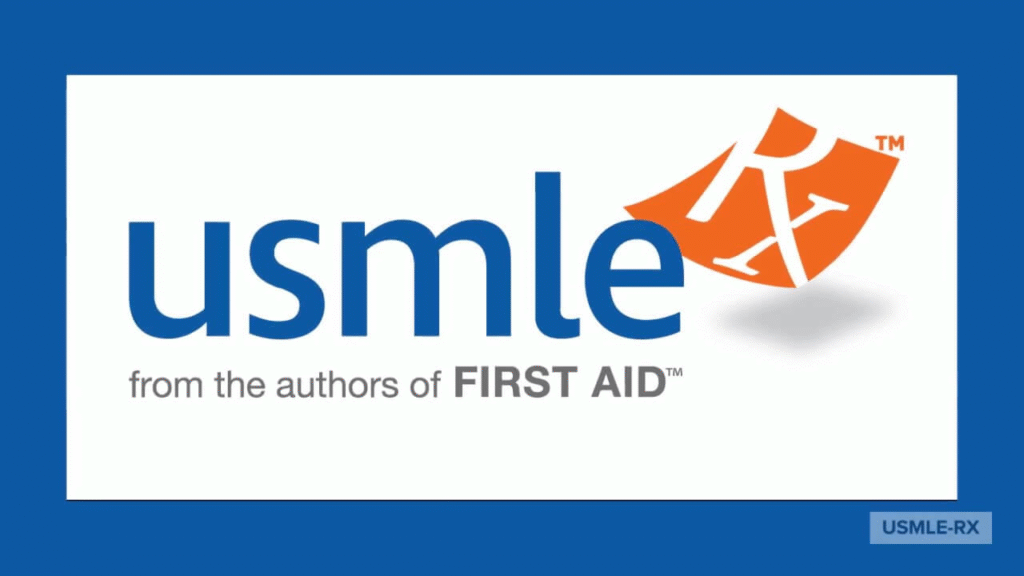
USMLE-Rx is a uniquely designed Step 1 prep course that revolves around First Aid for the USMLE Step 1, one of the most widely used study guides among med students. Developed by the same team behind First Aid, USMLE-Rx brings video lectures, a robust Qbank, and interactive flashcards into one interface—all cross-referenced with First Aid pages for seamless studying.
What makes USMLE-Rx stand out is how it reinforces high-yield facts with real-time application and memorization tools. While it doesn’t have the exam simulation strength of UWorld, its integration with First Aid and flashcard-based learning is invaluable for early- and mid-phase prep.
Key Features:
- 2,300+ USMLE-style questions directly linked to First Aid topics
- Over 300 hours of video lectures, all synchronized with First Aid chapters
- Express Videos for quick concept reviews and visual memory cues
- Flash Facts (spaced repetition flashcards) aligned with First Aid facts
- Anatomy, Microbiology, Pathology image banks
- Full performance tracking and topic-wise analytics
- Mobile app for practice and review on the go
Pros of USMLE-Rx Step 1
1. Unmatched Integration with First Aid
If you’re using First Aid for the USMLE Step 1, USMLE-Rx is the only course built specifically around that resource. Questions, videos, and flashcards all link back to page numbers, making it easy to reinforce what you study in the book.
2. Active Recall Through Spaced Repetition Flashcards
Its Flash Facts deck covers high-yield material through spaced repetition and active recall. This is ideal for memorization-heavy subjects like micro, pharm, and biochemistry.
3. Focused, Exam-Oriented Questions
The 2,300+ questions in the Qbank are not too easy, and many include clinical reasoning components with references to relevant First Aid content. Each question has well-structured rationales and high-yield takeaways.
4. Quick Learning with Express Videos
The video library includes concise, animated Express Videos that use visual mnemonics and storytelling—making difficult topics easier to remember without needing long lecture hours.
5. Affordable, Student-Friendly Pricing
Compared to UWorld and Kaplan, USMLE-Rx is more budget-friendly, and its monthly subscription model allows flexibility based on your study plan and goals.
Cons of USMLE-Rx Step 1
1. Not a Standalone Course for Late-Stage Prep
USMLE-Rx is better for building foundational knowledge and memory. For last-mile prep or test simulation, it lacks the advanced difficulty and nuanced reasoning found in UWorld or NBME practice tests.
2. Less Clinical Integration Compared to Amboss
Although strong in recall, USMLE-Rx does not match Amboss in clinical context integration, which can limit your ability to fully prepare for case-based or multi-step reasoning questions.
3. Outdated Interface in Parts
The platform design, while functional, can feel outdated and clunky, especially in the flashcard section or when trying to navigate across different modules.
4. Video Quality and Teaching Style Vary
Some students report inconsistent quality in videos—some are highly polished, others are more basic. The teaching style is more fact-driven than concept-explaining, which may not suit all learners.
5. Lacks Full-Length NBME-Style Exams
Unlike Kaplan or UWorld, USMLE-Rx does not provide full-length exam simulations, which makes it harder to gauge readiness under timed conditions.
Ideal For:
- Students using First Aid as their primary study guide
- Those in the early or middle phases of Step 1 preparation
- Learners who want to solidify high-yield facts and recall through flashcards
- Visual learners looking for animated, mnemonic-rich content
- Students on a budget who want flexible monthly pricing
Pricing:
| Plan | Duration | Price |
|---|---|---|
| Qmax (Qbank only) | 1 month | $79 |
| Rx360+ (Qbank + Videos + Flash Facts) | 3 months | $149 |
| Rx360+ | 6 months | $249 |
| Rx360+ | 12 months | $349 |
| Flash Facts only | Monthly | $19.99 |
See current plans and bundles on USMLE-Rx.com
Students also get discounts through AMA memberships or student groups.
Bottom Line:
USMLE-Rx is the perfect study companion for First Aid users, providing a deeply integrated system for recall, review, and foundational learning. While it lacks the simulation strength of UWorld or the clinical depth of Amboss, it is an excellent resource for students who want to anchor their prep around high-yield facts, reinforce them with practice questions, and build a solid knowledge base at an affordable price.
Expert Tips for Success on Step 1
The USMLE Step 1 exam demands more than passive studying — it requires a consistent strategy, cognitive endurance, and deep conceptual clarity. These tips, drawn from high scorers and medical educators, will help you streamline your prep and avoid common pitfalls:
1. Prioritize Deep Understanding Over Memorization
Many students make the mistake of rote learning, especially in subjects like biochemistry or pharmacology. However, Step 1 emphasizes mechanisms, systems-based reasoning, and pathophysiologic principles. For example:
- Don’t just memorize a list of heart murmurs — understand how valvular dysfunction alters blood flow and pressure.
- Instead of rote-learning side effects, grasp how a drug’s mechanism leads to them.
Use resources like Boards & Beyond and Pathoma, which break down difficult concepts into understandable frameworks, especially in physiology and pathology.
2. Continuously Track Performance and Adjust Accordingly
Use the performance analytics built into platforms like UWorld, AMBOSS, or USMLE-Rx to monitor your progress. Don’t just aim for high scores — instead:
- Identify your lowest-performing systems and subjects every week
- Adjust your review schedule to revisit those areas
- Tag questions you struggled with and review them biweekly
This ensures focused and personalized improvement rather than scattered revision.
3. Master Spaced Repetition Through Daily Review
Using Anki or similar tools can dramatically boost long-term retention. Aim for:
- 100–300 flashcards daily, depending on your schedule
- Use pre-made decks like AnKing, Zanki, or Lightyear, aligned with First Aid
- Always do reviews before new cards to preserve memory spacing
Spaced repetition is especially useful for micro, pharm, biostats, and image-heavy recall.
4. Simulate the Test to Build Mental Stamina
Taking full-length, timed blocks in NBME-style formats prepares you for the real exam day. Simulations help with:
- Building test-taking endurance (the real exam is 8 hours)
- Reducing cognitive fatigue and anxiety under pressure
- Practicing time management per question block
Try to simulate full exams at least 2–3 times before your actual test using NBME or UWorld self-assessments.
5. Avoid Resource Overload — Less Is More
Don’t fall into the trap of jumping between too many resources. Most successful students stick with:
- One core video content provider (like B&B or Lecturio)
- One primary Qbank (UWorld or AMBOSS)
- One flashcard tool (Anki or Rx)
Mastering fewer tools leads to a higher yield than superficially using everything. You can supplement weak areas as needed, but make your core resources consistent from the start.
Conclusion: Choosing the Right Step 1 Prep Course Can Define Your Success
With the USMLE Step 1 now scored as Pass/Fail, many students make the mistake of underestimating its importance. But a strong performance still signals competence to residency programs and builds the clinical foundation you’ll need for Step 2 CK and clerkships.
The right prep course can make your study process significantly more efficient and less stressful. Whether you’re looking for a robust Qbank like UWorld, conceptual clarity from Boards & Beyond, or the interactive tools of AMBOSS or Lecturio, your choice should be based on how you learn best, how much time you have, and where your weaknesses lie.
Most top-performing students don’t rely on just one course—they combine two or three tools strategically. For example, pairing UWorld with Boards & Beyond is one of the most popular and effective combinations. Others may add Anki, USMLE-Rx flashcards, or NBME practice exams for reinforcement and spaced repetition.
In the end, consistency and self-awareness will be your biggest assets. Once you’ve selected a course or combination that fits, commit to your schedule, track your progress, and adjust based on performance—not panic.
Frequently Asked Questions (FAQs)
1. Can I pass the USMLE Step 1 using only UWorld?
UWorld is considered the gold standard for Step 1 question practice and explanations, but most students benefit from combining it with a content review resource like Boards & Beyond or Lecturio. Relying solely on UWorld might leave gaps in foundational understanding, especially if you’re earlier in your prep.
2. What is the best USMLE Step 1 prep course for International Medical Graduates (IMGs)?
IMGs often prefer structured, lecture-based courses that cover foundational sciences thoroughly, such as Kaplan or Becker. Additionally, combining these with UWorld’s Qbank is common to prepare for clinical reasoning and question style.
3. How many hours should I study for Step 1?
Study time varies widely depending on your baseline knowledge, but most students spend between 300 to 600 hours over 3 to 6 months. Consistency and quality of study are more important than just total hours logged.
4. Are free USMLE Step 1 resources enough to pass?
While free resources like NBME practice exams, First Aid, and free question banks can be helpful supplements, relying solely on free materials may not provide the depth and quality of practice necessary for a strong Step 1 performance.
5. How many NBME practice exams should I take before Step 1?
Taking at least 2 to 3 NBME practice exams during your prep is recommended. These exams help you assess readiness, identify weak areas, and build test-taking stamina. Ideally, take one early to set a baseline, one midway to adjust your study plan, and one closer to your test date.
